Take the First Step For Estimate!
- Accurancy
- Efficiency
- Transparency
- Customization
- Time Saving
- Professionalism
- Cost Control
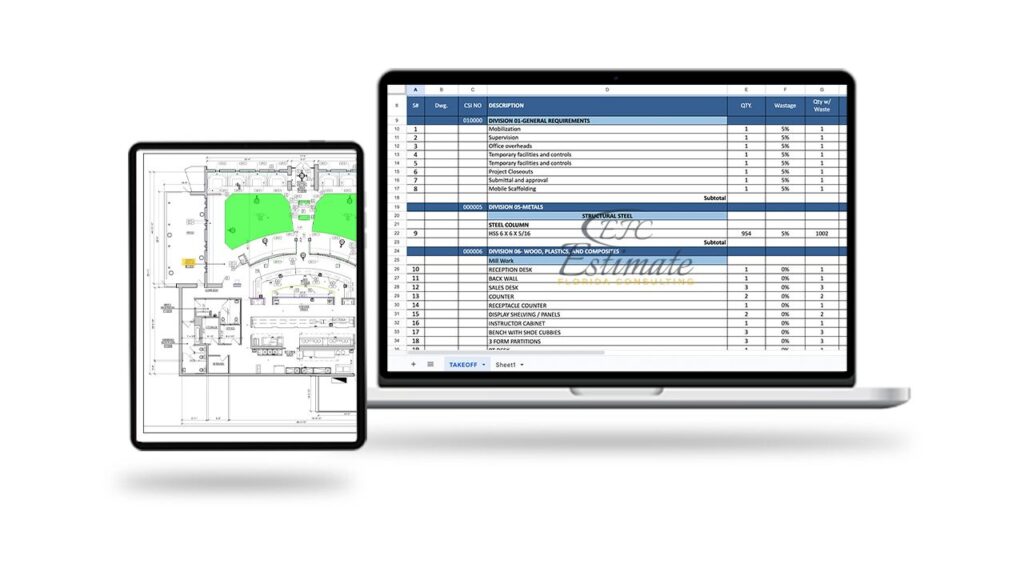
When asked about the costs of replacing flooring in commercial buildings, it’s clear that budgeting for this project requires careful consideration of various elements. Installation expenses typically range from $2 to $20 per square foot. So, for a standard 500 square foot area, costs could range between $1,000 and $10,000, with the national average sitting at about $7 per square foot or $3,500 in total, encompassing both materials and labor. Factors influencing these costs include the choice of flooring, the complexity of the installation, and prevailing local labor rates.
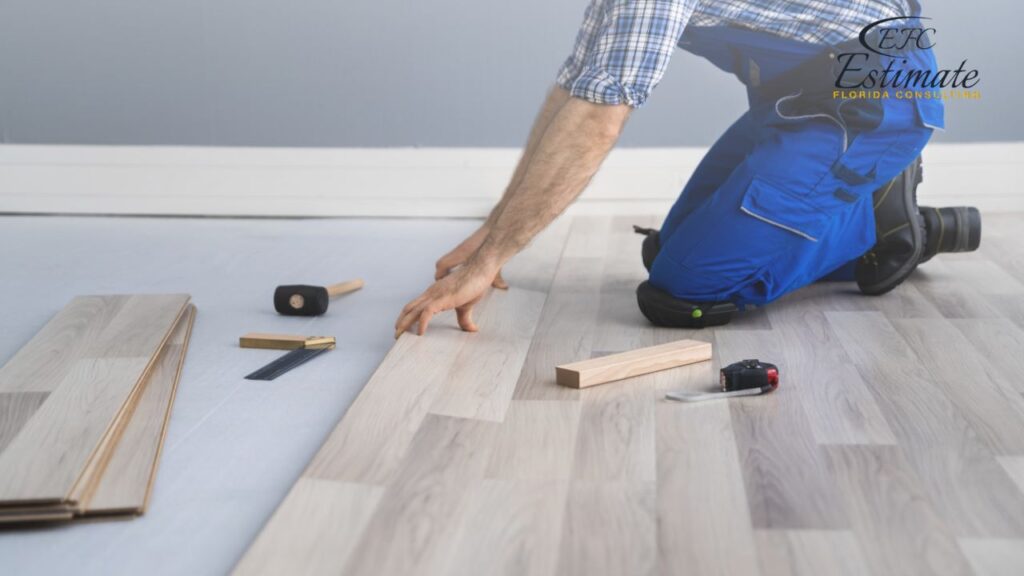
By understanding these aspects, building owners can craft a budget that ensures a successful and economically viable renovation project, tailored to their specific needs.

Flooring Material | Price Range per sq.ft. | Typical Room Size (sq.ft.) | Total Cost Range | Labor Cost as Percentage of Total |
Laminate, Carpet, Vinyl, Linoleum | $1.5 – $4 | 300 | $1,800 – $2,700 | Up to 40% |
Hardwood | $8 – $22 | 300 | $2,400 – $6,600 | Up to 40% |
Budgeting for commercial flooring replacement requires a nuanced understanding of the costs involved, including materials, labor, and any additional fees for removal and disposal of the existing floor. On average, businesses can expect to spend between $3 to $12 per square foot for standard materials like vinyl or carpet, and $5 to $20 for premium options such as hardwood or high-end tiles. For a 10,000 square foot space, total costs can range from $30,000 to $120,000, or even higher for luxury materials. Effective budgeting ensures the selection of the right flooring solution that balances cost with durability and aesthetic appeal.
Flooring Material | Cost per Sq.Ft. | Total Cost for 10,000 Sq.Ft. |
Vinyl/Carpet | $3 – $12 | $30,000 – $120,000 |
Hardwood/High-end Tiles | $5 – $20 | $50,000 – $200,000 |
Optimizing commercial spaces with a new floor involves strategic financial planning. Flooring replacement costs are influenced by the choice of material, area size, and the complexity of installation. Economical options like laminate might cost between $2 to $8 per square foot, while luxury vinyl tiles or engineered wood range from $4 to $15 per square foot. For larger projects, such as a 20,000 square foot area, expenses can escalate from $40,000 for laminate to upwards of $300,000 for high-quality alternatives. Investing wisely in flooring can dramatically enhance the space’s functionality and aesthetic, contributing to a better customer and employee experience.
Flooring Option | Cost per Sq.Ft. | Total Cost for 20,000 Sq.Ft. |
Laminate | $2 – $8 | $40,000 – $160,000 |
Luxury Vinyl/Engineered Wood | $4 – $15 | $80,000 – $300,000 |
The cost of replacing flooring in commercial buildings can vary widely depending on factors such as the type of flooring material, the size of the area, the condition of the existing flooring, and the complexity of the installation process. Here’s a breakdown of potential low, mid, and high cost ranges for flooring replacement in commercial buildings:
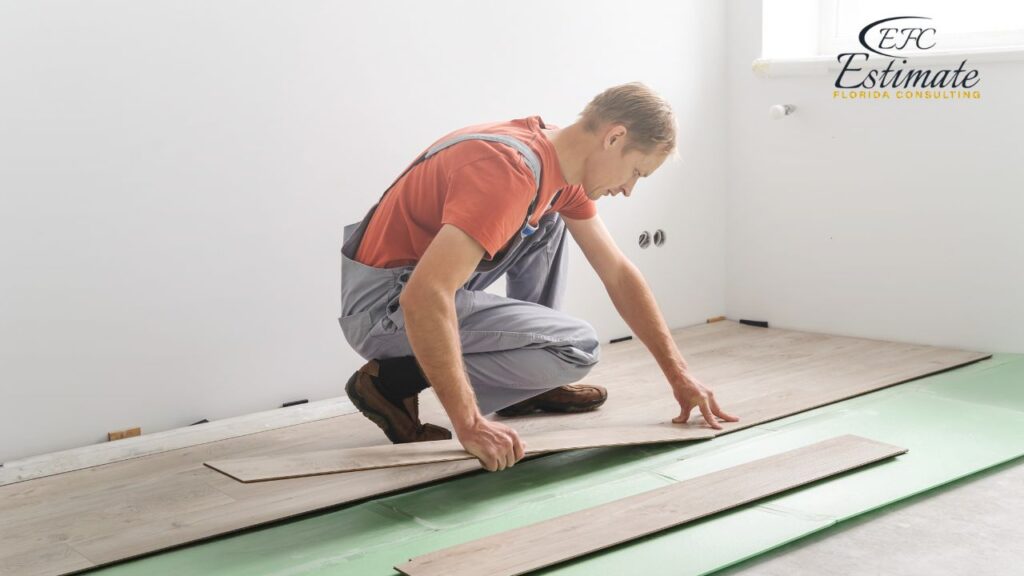
It’s important to note that these cost ranges are estimates and can vary significantly depending on factors such as the specific requirements of the project, the region’s labor and material costs, and any additional services required (e.g., removal of existing flooring, subfloor repairs, or specialty finishes). Additionally, prices may fluctuate over time due to market conditions and other factors.
Before embarking on a flooring replacement project, it’s crucial to conduct a thorough assessment of the existing floor’s condition. This involves examining areas of wear and tear, such as cracks, stains, or uneven surfaces, and determining the underlying reasons for replacement. Whether it’s to address aesthetic concerns, enhance safety measures, or improve functionality, understanding the specific issues with the current flooring is essential for planning an effective replacement strategy. By identifying key areas in need of attention and assessing the overall condition of the floor, building owners and managers can make informed decisions about the most suitable flooring options and ensure that the new flooring meets the building’s requirements.
When it comes to selecting new flooring for commercial buildings, there’s no shortage of options available on the market. From durable vinyl and cost-effective laminate to elegant hardwood and plush carpeting, each type of flooring material offers its own set of benefits and considerations. The choice of flooring depends on various factors, including the building’s use, the level of foot traffic it experiences, and the desired ambiance or aesthetic appeal. For high-traffic areas like corridors or lobbies, resilient materials such as vinyl or tile may be preferred for their durability and ease of maintenance. In contrast, spaces where comfort and aesthetics are paramount, such as offices or reception areas, may benefit from the warmth and elegance of hardwood or the softness of carpet. By carefully considering the unique requirements and priorities of the building, owners and designers can select the most suitable flooring options to meet both functional and aesthetic needs.
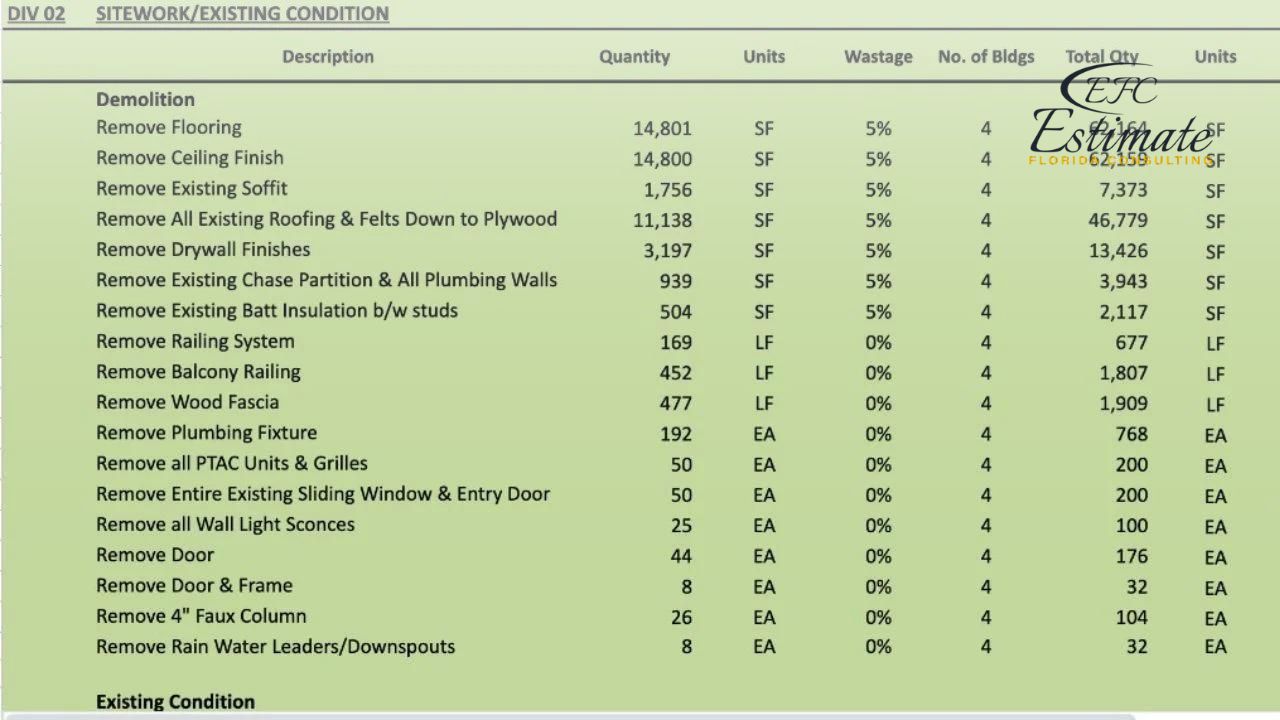
ZIP Code Based Estimate
Highly Accurate

Fully Insured License Hire Contractor for Commercial Building Flooring Replacement
Hire Contractor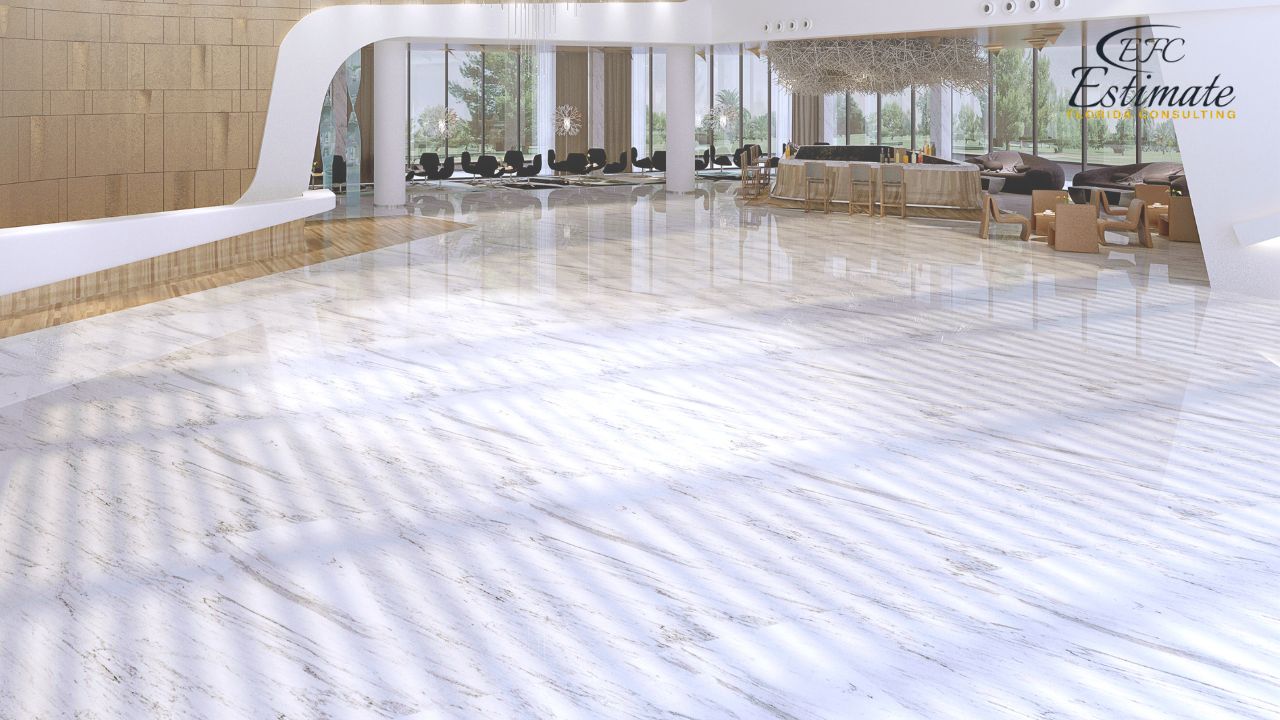
Make Informed Design Decisions Showcase Your Design Ideas
Get RenderingThe size of the space undergoing flooring replacement plays a pivotal role in determining overall costs. Larger areas typically require more materials, leading to higher material costs. Additionally, labor costs may increase with larger spaces due to the extended time and effort required for installation. Conversely, smaller areas may incur lower material and labor costs, making them more cost-effective to renovate. Whether renovating a single room or an entire floor, accurately assessing the floor area is essential for budget planning and cost estimation, ensuring that the project remains financially viable and within budget constraints.
The choice of flooring material has a significant impact on replacement costs, with prices varying widely across different options. Generally, materials such as carpet and vinyl tend to be more affordable, making them popular choices for budget-conscious projects. In contrast, premium materials like hardwood and tile are typically on the higher end of the cost spectrum, reflecting their durability, aesthetic appeal, and longevity. Factors such as material quality, brand reputation, and installation requirements can also influence costs within each category. By carefully considering the pros and cons of various flooring materials and their associated costs, building owners can make informed decisions that align with their budget and project goals.
Before installing new flooring, certain preparatory tasks must be completed, which can add to the total replacement costs. This may include removing old flooring materials, such as carpet, tile, or hardwood, which can be time-consuming and labor-intensive. Additionally, leveling the floor surface to ensure a smooth and even substrate for the new flooring may require additional materials and labor. These preparatory tasks are essential for achieving a high-quality installation and ensuring the longevity of the new flooring. However, they contribute to the overall project costs and should be factored into the budgeting process from the outset.
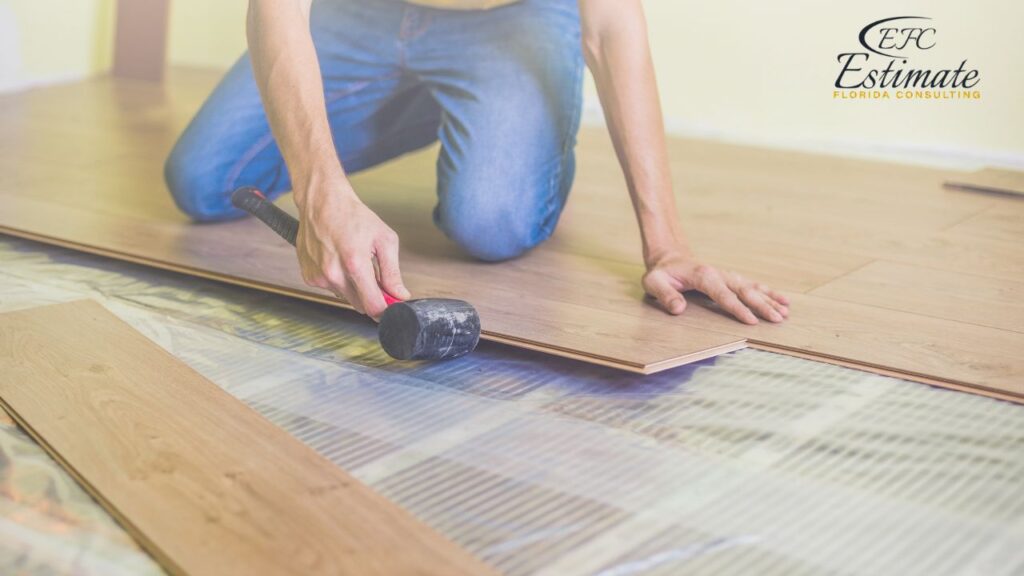
The complexity of the installation process can significantly influence replacement costs, particularly when dealing with custom designs, intricate patterns, or challenging spaces. Installing flooring in areas with irregular shapes, architectural features, or obstructions may require additional time and expertise, resulting in higher labor costs. Similarly, incorporating custom designs or intricate patterns into the flooring design can also increase installation complexity and labor costs. It’s essential to consider these factors when planning a flooring replacement project, as they can impact both the timeline and budgetary requirements. By accurately assessing the installation complexity and accounting for any additional labor costs, building owners can ensure a successful and cost-effective renovation process.
The geographical location of the building can also influence replacement costs, as labor and material costs vary from one region to another. Urban areas with higher living expenses and greater demand for construction services may experience higher labor costs compared to rural areas. Similarly, material costs can fluctuate based on factors such as transportation fees, local taxes, and market conditions. It’s essential for building owners to consider these regional variations when budgeting for a flooring replacement project, as they can impact the overall cost and feasibility of the renovation. By obtaining quotes from local contractors and suppliers, building owners can gain a better understanding of the specific cost considerations associated with their geographic location, allowing for more accurate budget planning and cost estimation.
So, why wait? Send us your plans and give us a call now. Let’s make your project a success together!

The cost of materials is a significant component of the total flooring replacement cost and varies depending on factors such as the type of flooring material, its quality, and the brand. For example, options such as carpet, vinyl, laminate, hardwood, and tile each come with their own price points. Within each type of flooring, there can be a range of quality levels and brand options, further affecting the cost. Higher-quality materials and well-known brands typically come with a higher price tag, while more budget-friendly options may offer cost savings.
Labor costs encompass various aspects of the installation process, including the removal of old flooring, preparation of the subfloor, and installation of the new flooring. These costs can be quoted per square foot of flooring or as a daily rate for labor, depending on the contractor and the specific project requirements. The complexity of the installation, the condition of the existing floor, and any additional services required (such as leveling the subfloor) can all impact labor costs.
Disposal costs refer to the expenses incurred for removing and properly disposing of old flooring materials. Depending on the type of flooring being replaced and local regulations, disposal costs may vary. For example, removing and disposing of carpet may have different costs compared to tile or hardwood. Additionally, disposal fees may include transportation costs to haul away the old materials and fees for environmentally responsible disposal methods.
In addition to the main flooring material, there are often additional features and accessories required for a complete installation. This may include underlayments to provide cushioning or sound insulation, moisture barriers to protect against water damage, and baseboards or trimmings to finish the edges of the flooring. The need for these additional features depends on the chosen flooring material and the specific requirements of the installation. The cost of these additional features should be factored into the overall budget for the flooring replacement project.
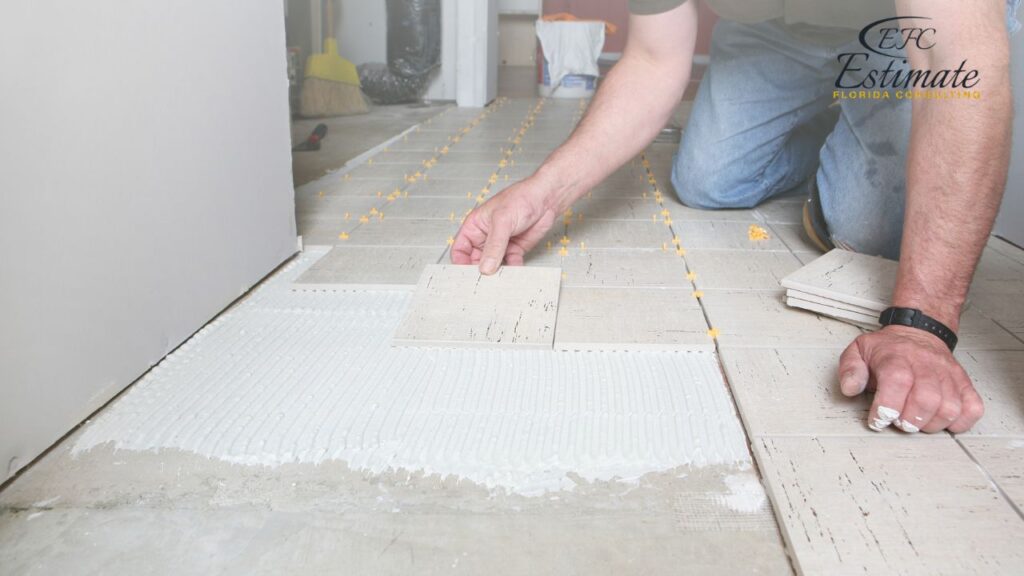
A cost estimator for flooring replacement in commercial buildings takes into account all the factors mentioned. While prices fluctuate, a rough estimate per square foot can provide a starting point for budgeting:
These estimates should be adjusted for the specific details of your project, including the complexity of the installation and the cost of labor in your area.
Opting for bulk purchases of flooring materials can lead to significant cost savings. Suppliers often offer discounts or reduced pricing for larger quantities of materials, allowing businesses to lower their per-unit costs. By purchasing materials in bulk, commercial property owners can take advantage of economies of scale and reduce the overall cost of their flooring replacement project. However, it’s essential to carefully assess the storage capacity and material requirements to ensure that bulk purchases are cost-effective and practical for the specific project.
Phased replacement involves dividing a large-scale flooring replacement project into smaller, manageable phases that are completed over time. This approach helps spread out the financial burden of the project, making it more manageable for businesses with budget constraints. By tackling flooring replacement in phases, commercial property owners can address priority areas first while allowing for continued operations in other parts of the building. Additionally, phased replacement minimizes disruption to occupants and reduces the need for temporary relocation or downtime, further optimizing cost management.
Hiring a professional consultant with expertise in flooring materials and installation can provide valuable insights and recommendations for cost-effective solutions. Consultants can assess the specific needs and requirements of the commercial property, considering factors such as foot traffic, durability, maintenance, and budget constraints. By leveraging their industry knowledge and experience, consultants can help identify the most suitable flooring options that offer the best value for money. Additionally, consultants can assist in negotiating pricing with suppliers and contractors, further optimizing cost management for the flooring replacement project.
Obtaining multiple bids for both materials and labor is essential to ensure competitive pricing and cost efficiency. By soliciting bids from multiple suppliers and contractors, commercial property owners can compare pricing, quality, and terms to identify the most cost-effective options. Competitive bidding encourages suppliers and contractors to offer competitive pricing and may result in lower overall project costs. Additionally, it provides an opportunity to negotiate terms and conditions to further optimize cost management and ensure that the project stays within budget constraints.
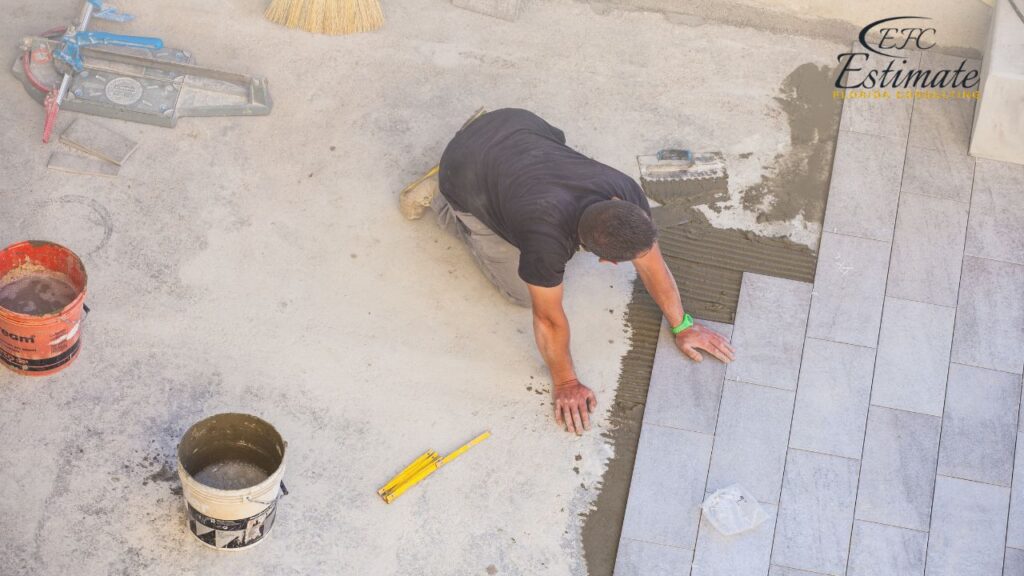
Selecting the right flooring material for a commercial building involves balancing aesthetics, functionality, cost, and durability. Here’s a closer look at the pros and cons of various flooring types to assist in making an informed decision.
Use Cases: Best for office spaces, waiting areas, and places where the look of wood is desired without the high cost.
Use Cases: Ideal for executive spaces, boardrooms, and any area where a premium look is desired.
Use Cases: Suitable for office environments, hotel rooms, and residential areas within commercial buildings.
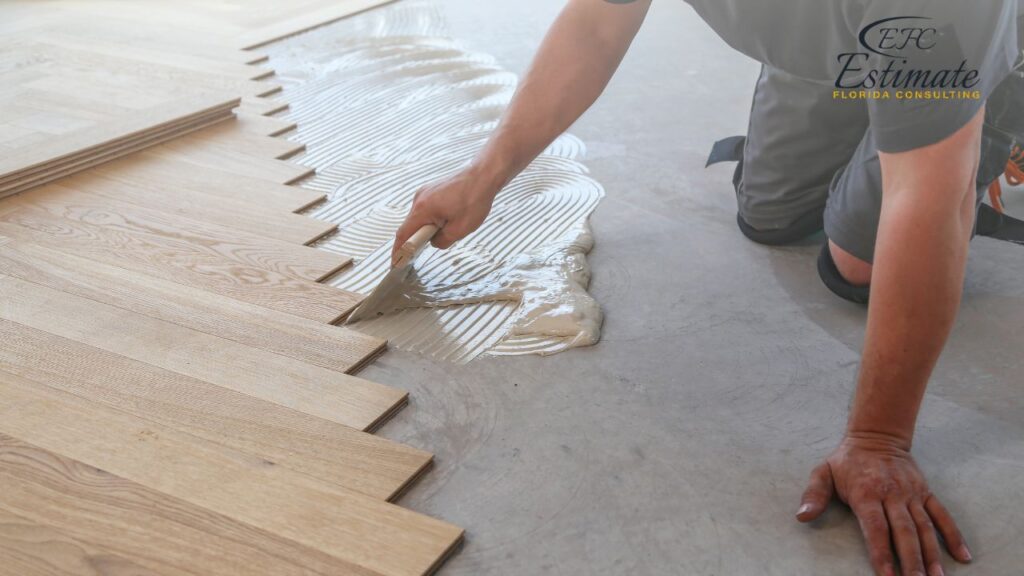
Use Cases: Ideal for entryways, bathrooms, and kitchens in commercial settings where moisture resistance and easy cleanup are priorities.
Receive highly accurate estimates tailored to your zip code, giving you the edge to secure more projects. Upload your plans and start winning!
Selecting the right flooring replacement for commercial buildings involves considering various factors such as material cost, durability, maintenance requirements, and aesthetic appeal. By utilizing cost estimators, understanding replacement needs, and implementing effective cost management strategies, building owners and managers can make informed decisions to ensure successful and budget-conscious flooring replacement projects.
To accurately estimate the cost of flooring replacement in a commercial building, begin by evaluating the total area that requires new flooring. The choice of flooring material is crucial as costs vary widely between options such as laminate, carpet, vinyl, and hardwood, with prices ranging from $1.5 to $22 per square foot. Factor in the condition of the existing floor, as removal and preparation work can add to the overall cost. Additionally, consider the labor charges, which can account for up to 40% of the project’s budget, especially in regions with higher costs of living or more complex installation requirements. Tools like online flooring cost calculators can offer a preliminary estimate, but consulting with professionals for a detailed quote is recommended for the most accurate budget planning.
Selecting new flooring materials for a commercial space involves considering the building’s functionality, expected foot traffic, and overall design aesthetic. Durability and ease of maintenance are crucial for high-traffic areas, while the visual appeal may be a priority for spaces focused on customer experience. Budget limitations also play a significant role in the decision-making process. Additionally, evaluate the environmental conditions of your space, such as moisture levels and exposure to sunlight, as these can affect the longevity and appearance of certain flooring types. Consulting with flooring specialists can provide insights into the best materials suited for your specific commercial needs.
Implementing cost-saving strategies during flooring replacement can significantly impact the overall project budget. Consider options like selecting more affordable yet durable materials or exploring discounts on bulk purchases. A phased replacement approach allows for spreading the financial burden over time while minimizing operational disruptions. Leveraging competitive bids from multiple contractors can also unearth potential savings. Furthermore, exploring modern, cost-effective flooring solutions that offer easy maintenance and longevity, such as luxury vinyl plank or high-grade laminate, can reduce long-term costs associated with repairs and replacements.
Determining the most appropriate flooring option for a commercial building requires a comprehensive analysis of the building’s usage, traffic patterns, and aesthetic goals. High-traffic areas benefit from durable, easy-to-maintain flooring options like reinforced vinyl or commercial-grade carpet tiles. For areas where aesthetics are paramount, natural stone or hardwood might be preferable, despite the higher maintenance and cost. It’s essential to balance functionality with design to create an inviting yet practical environment. Engaging with a flooring consultant can provide tailored recommendations based on an assessment of your specific needs, budget, and the physical characteristics of your space.
Embarking on a commercial flooring replacement project comes with several challenges, including disruption to daily operations, adherence to budget constraints, and compliance with safety standards. Planning for minimal operational disruption is crucial, which might involve scheduling work during off-hours or in phases. Budget management requires thorough cost estimation and exploring various material and labor options without compromising on quality. Safety considerations, such as ensuring the new flooring meets slip resistance standards and aligns with fire regulations, are paramount. Additionally, logistical challenges like storage and disposal of old flooring materials and coordination with contractors need careful management. Addressing these considerations with detailed planning and professional guidance can lead to a successful flooring replacement project.
Here I am going to share some steps to get your flooring replacement cost for commercial buildings estimate report.
You can send us your plan on info@estimatorflorida.com
Before starting your project, we send you a quote for your service. That quote will have detailed information about your project. Here you will get information about the size, difficulty, complexity and bid date when determining pricing.
Our team will takeoff and estimate your project. When we deliver you’ll receive a PDF and an Excel file of your estimate. We can also offer construction lead generation services for the jobs you’d like to pursue further.



561-530-2845
info@estimatorflorida.com
Address
5245 Wiles Rd Apt 3-102 St. Pete Beach, FL 33073 United States
561-530-2845
info@estimatorflorida.com
Address
5245 Wiles Rd Apt 3-102 St. Pete Beach, FL 33073 United States
All copyright © Reserved | Designed By V Marketing Media | Disclaimer